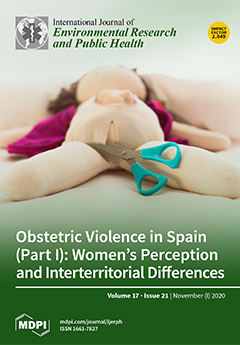We examined the association between multidimensional empathy, brain function, and mental fitness and identified correlates of mental fitness. In total, 146 female high school freshmen from a South Korean school participated in this cross-sectional study. Data were collected from March to April 2019,
[...] Read more.
We examined the association between multidimensional empathy, brain function, and mental fitness and identified correlates of mental fitness. In total, 146 female high school freshmen from a South Korean school participated in this cross-sectional study. Data were collected from March to April 2019, using a self-report questionnaire and quantitative electro-encephalographic data (QEEG). Instruments included the Interpersonal Reactivity Index and the Mental Fitness Scale, to access multidimensional empathy and mental fitness. Prefrontal cortex brain function was assessed with the brain quotient measure from the QEEG during free time after school. Data were analyzed using descriptive statistics, Pearson’s correlation coefficient, and multiple regression analysis. Mental fitness had statistically significant relationships with multidimensional empathy (r = 0.36,
p < 0.001) and brain quotient (r = 0.23,
p = 0.005). Demographic factors affecting mental fitness included satisfaction with school life (β = 0.23,
p = 0.001) and economic status (β = 0.17,
p = 0.024). Factors from the subscales of multidimensional empathy included perspective taking (β = 0.26,
p = 0.001), fantasy (β = 0.22,
p = 0.004), and personal distress (β = −0.19,
p = 0.010); and the brain function factor was brain quotient (β = 0.14,
p = 0.038). The explanatory power of the model was 49.4% (
F = 14.44,
p < 0.001). There is a need for a concrete and objective understanding of mental fitness in adolescents to develop intervention programs for freshmen with various maladaptation problems.
Full article





